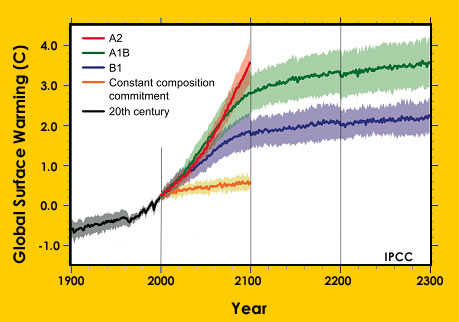Click on image for full size
Courtesy of Scripps Institution of Oceanography, UC San Diego
Finding Answers in the Clouds
News story originally written on May 21, 2008
Scientists are sending tiny airplanes buzzing through the sky to discover how air pollution can impact weather, climate, and global warming.
The tiny airplanes look like regular planes but they have only a wing span of eight feet and each little plane weighs less than 50 pounds. They do not have a pilot and are remote-controlled. Yet, these aircraft are not toys - they are complex research tools.
The team of scientists outfitted the little planes with miniature instruments to measure solar radiation, cloud-drop size and concentrations, particle size and concentrations, turbulence, humidity and temperature. Then, they flew the planes into the clouds of air pollutants above the Maldives Islands in the central Indian Ocean.
The Maldives are a good place to study air pollution. The pollution forms a haze of particulates and cumulus clouds. These hazy pollution clouds are called brown clouds. They can form naturally during large forest fires. But brown clouds are often made by human activities. The smoke from power plants, automobiles, factories and other sources all contribute to brown clouds. The pollution travels high in the atmosphere and is carried by the wind. In the Maldives, the source of the brown cloud pollution is India.
The scientists wanted to look at brown clouds from the inside out. They wanted to better understand how pollution changes Earth's albedo, or amount of sunlight that is reflected back out into space. Albedo impacts the Earth's temperature, weather patterns, and the climate.
They discovered that more air pollution has increased the albedo of the atmosphere. This means that more sunlight is reflected back to space. So air pollution may hide some of the impact of global warming by keeping the planet somewhat cooler. In addition, it suggests that as air pollution, which causes serious health problems, is reduced, the global climate will get even hotter.
The results of this research will help create more accurate climate models which will help us make more accurate predictions of what Earth’s climate in the future will be like.















